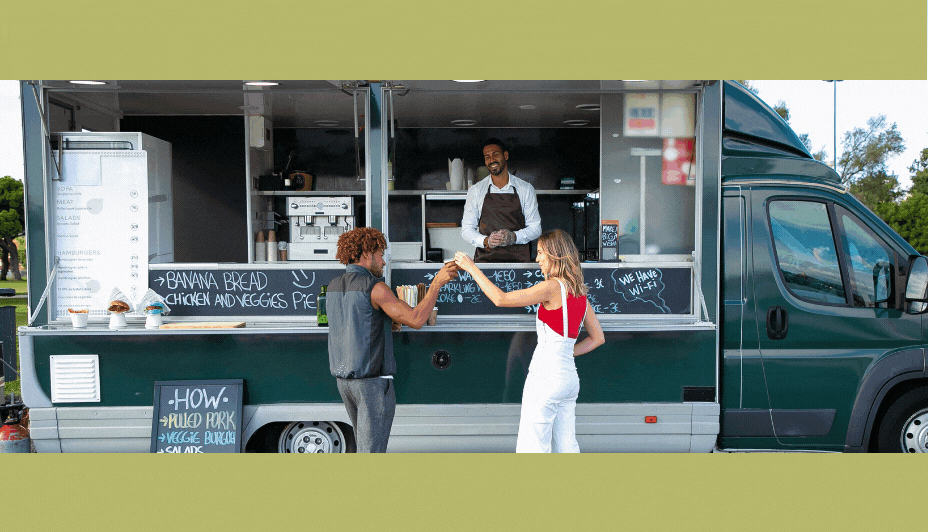
2022-05-27
Brick-and-mortar vs. pop-ups: Mortal F&B combat?
News
The explosive growth of online food orders has shown that agility is the key to survival in the food and beverages world. But does that mean physical restaurants are going out of style? No! That's like saying we don't need supermarkets because we can't order groceries online. You probably know how long those check-out lines can be if you've been to a supermarket lately.
So, focusing all your energies on online food delivery isn't a long-term strategy.
Your physical restaurant must be future-ready too.
On the one side, there's the classic brick-and-mortar restaurant. On the other side is the mobile restaurant (like pop-up food trucks). So, what's the difference between the two?
Even if you're new to the F&B world, you may think, "Well, it's pretty obvious." But having been running a restaurant chain for over a decade - let me tell you that in this industry, the details matter. This February, I was also thrilled to launch Zitimama - the world's first Baked Pasta QSR model. It's based on a one-of-a-kind hybrid concept that brings out the best of brick-and-mortar and mobile restaurants.
Now, let's get into the nitty-gritty of what separates the two.
New-age experiences for next-gen customers
Remember how every business was targeting the millennial crowd just a few years ago? Today, the millennials are the new baby boomers. So, the next time you see an ad for them, know that they're talking about people above 40! Now, ask yourself – who's your crowd? Gen-Z and whoever comes next, of course. And as you may know, these customers want on-the-go food experiences.
That means simplicity, speed, and flexibility, which are synonymous with mobile restaurants. But they don't want to sacrifice creativity and quality for mobility. Pop-up restaurants are perfect for them because it's easier to take orders, customize the dish, and serve it instantly!
Zen and the art of managing infrastructure
Ask any brick-and-mortar restaurant owner what gives them the most nightmares - it's probably the fear of incurring unexpectedly high operational costs and running into infrastructure issues. It can be a rollercoaster ride - from paying rent/lease/loan to dealing with leaky pipes. In the case of mobile restaurants, their agile business model requires considerably lower costs for managing infrastructure, inventory, equipment, maintenance, insurance, business license, etc. It's certainly more Zen regarding infrastructure management.
"Money often costs too much"
Let's not kid ourselves into thinking that pricing doesn't matter. Restaurant owners know it, but they wish that it weren't true! Traditional brick-and-mortar restaurants tend to be pricier when compared to mobile restaurants.
These food trucks provide more accessibility in terms of pricing, given their lower operating costs, which allows them to give more bang for the buck. The affordability attracts a lot of customers who are looking for a delicious meal on a budget.
Who else is there at your location?
Gen-Zs will tell you that FOMO (Fear Of Missing Out) is real. And one of the ways they try to adapt to the latest trends and fashions is by showing up at the right place. Otherwise, it's like showing up to a party - and only the host and the DJ showed up. Are your customers going to stay there just for the snacks?
Nope.
But brick-and-mortar restaurants can't simply go wherever their customers are. At best, they can branch out as opposed to constantly changing locations. However, mobile restaurants have a lot of flexibility to move around and find the best spots (meaning - whenever their customers prefer hanging out, like in the mall). They can even track special events and festivals – getting more eyes on their food trucks.
Trust is still cool
Trust may seem like an old-school customer expectation – but the next-gen still finds it extremely cool! So, they can rely on most brick-and-mortar restaurants to be available throughout the week. They also feel comfortable knowing the type of experience they would receive.
Mobile restaurants also look to establish trust, but in a very different way. The customers trust the dining experience to be worth the thrill of showing up on time. So these pop-up establishments are generally open for only a few hours. Sometimes, they may even take a few days' breaks with nothing but a "we'll be back soon" promise. It creates excitement as the menu may completely change – or get some upgrades to make the experience faster or tastier.
I hope this article served some of the interesting details of brick-and-mortar and mobile restaurants. As I mentioned earlier, these are based on my experience managing a restaurant chain and the world's first Baked Pasta QSR model. Of course, your decision must be based on factors like budget size, growth goals, workforce skill level, etc. What I can reassure you is that both these physical formats of restaurants are very much in style.
Sundae Royale Opens At Resorts World Sentosa With Famous Ice Cream And Churros
This Popular Hawker Bakery In Bukit Timah Has Muffins And Tarts In Over 20 Flavours
China-Famous Molly Tea Is Opening In SG In 2026, Get Viral Jasmine Milk Tea Here
Ultimate JB Food Guide 2025: 60 Best Cafes, Restaurants, And Stalls In Johor Bahru








